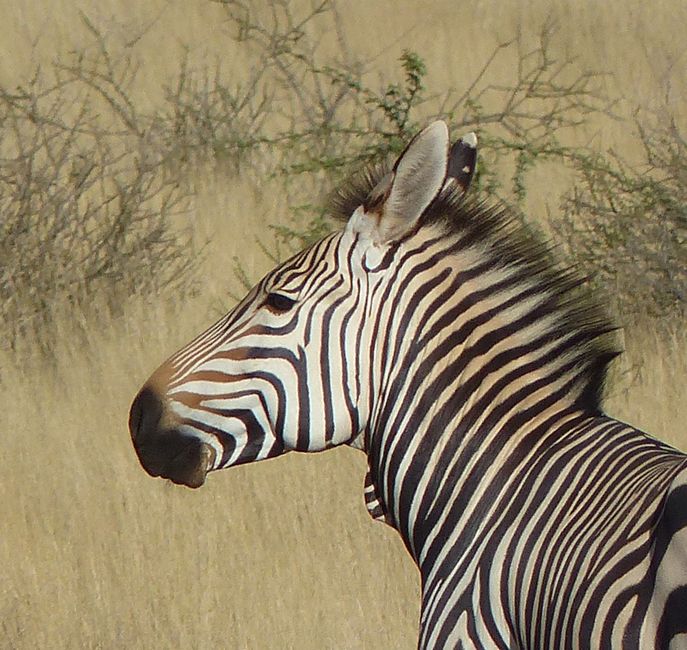Atemberaubend
Tshaj tawm: 14.02.2023
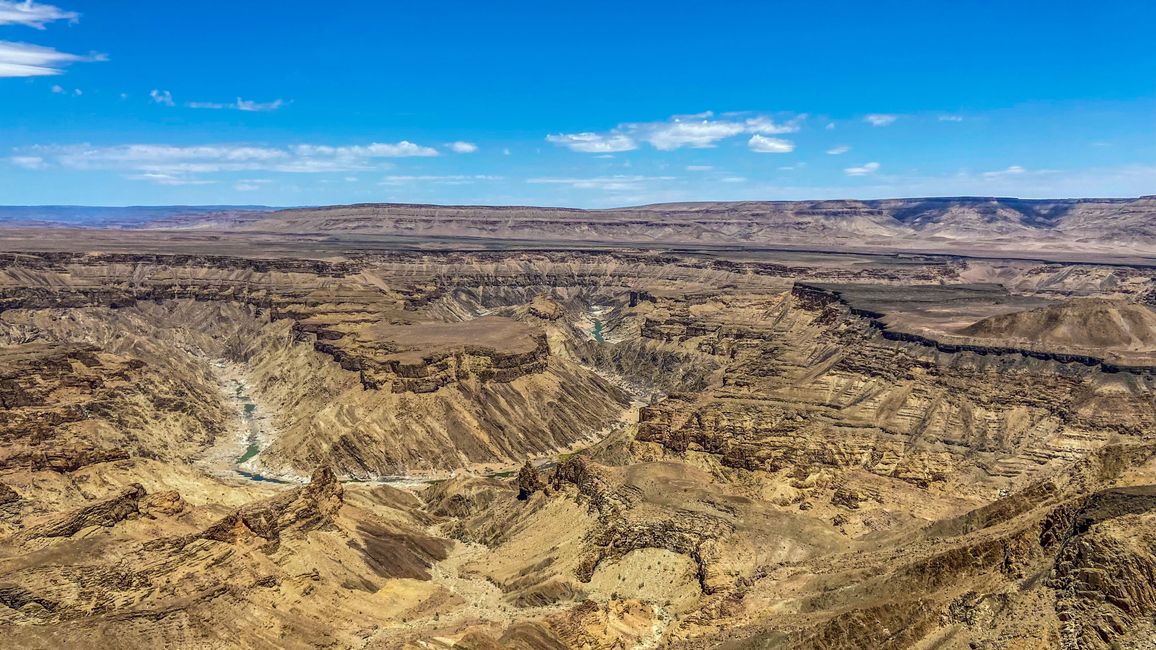



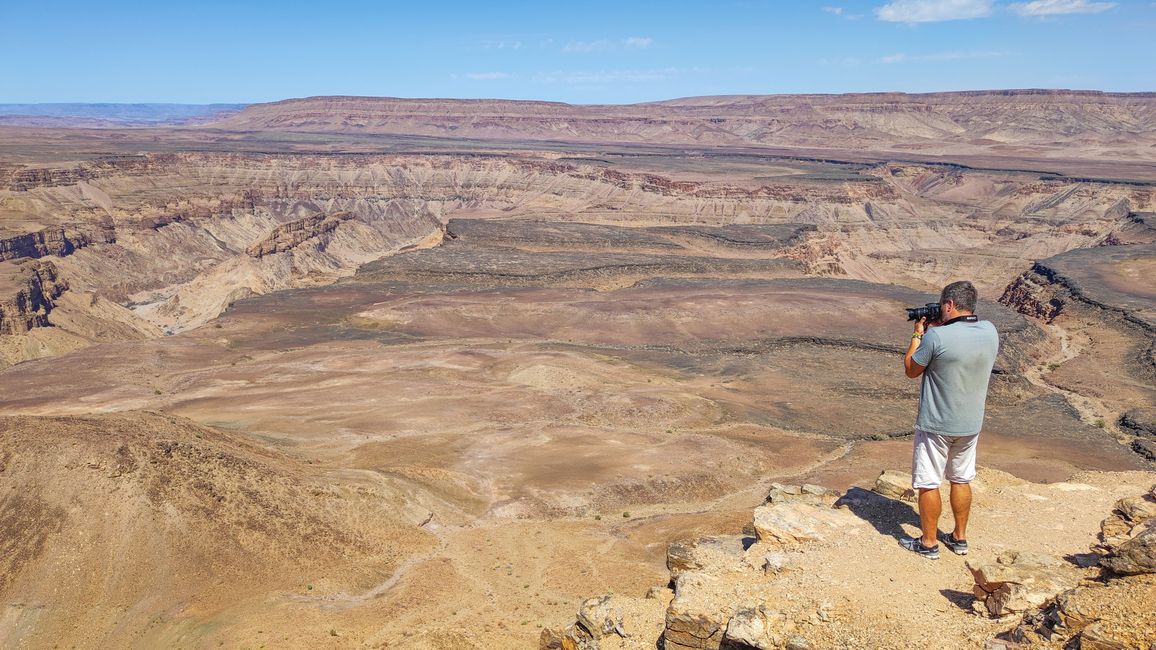











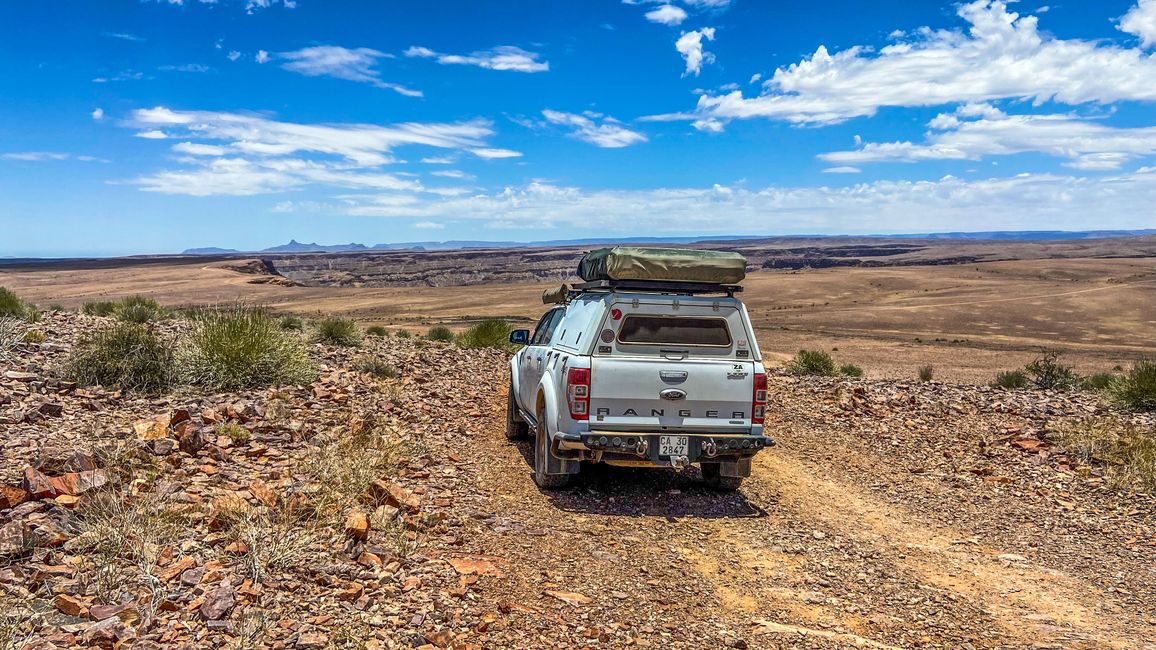



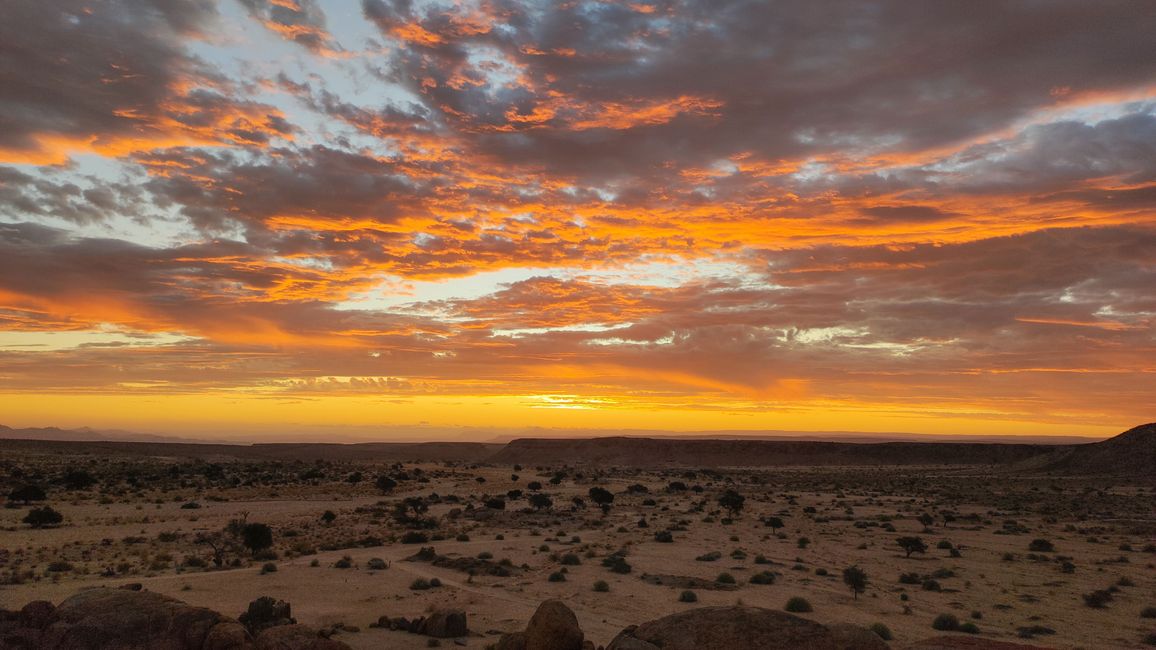

Sau npe yuav ntawv xov xwm
Day 7, 03.01.23, Fish River Canyon
After a hearty breakfast, there is only one item on the agenda today: The Fish River Canyon. With a length of about 160 kilometers, a width of up to 27 kilometers, and a depth of up to 550 meters, it is the largest canyon in Africa and the second largest canyon in the world after the Grand Canyon. It was carved out by the Fish River.
The Fish River, with a length of over 650 kilometers, is the longest river in Namibia. It originates in the eastern Naukluft Mountains and only flows below its dam, the Hardap or Neckartal Dam, during times of heavy rain. The Fish River Canyon mainly runs through the Hunsberg Mountains, starting in the north at Seeheim and ending in the south at Ai-Ais, before the river flows into the Orange River a few kilometers further south.
Due to the reduced water flow below the Hardap Dam, not only the future erosion of the riverbed is minimized, but also the vegetation along the river will change over time. However, even in times of low rainfall, individual pools can be found in the riverbed, which are likely fed by groundwater throughout the year. These water sources are used by some antelope species as well as leopards. According to the Namibian Weather Bureau, record temperatures of more than 50°C have been measured here.
The Fish River Canyon hiking trail, which winds its way through the canyon, is considered one of the best hiking trails in southern Africa. It is open annually from April to September. The hike, which starts near the Hobas Camp, is approximately 85 km long and usually takes 4 to 5 days to complete.
Of course, this hike immediately goes on Cindy's bucket list. However, for today she is satisfied with the bike and sets off about an hour earlier to ride to the Fish River Canyon Park, which is about 14 km away. We choose one of the viewpoints as our meeting point.
When I arrive at the entrance of the park, I realize that I don't have any cash with me, which is the only form of payment accepted for admission. How did Cindy get in, actually? Anyway, I ride back to then realize that we don't have any cash left. Since the lodge does not have an ATM, I ask the manager for some cash. When I arrive back at the entrance, I am immediately told that I have to pay for two people because a lady had already ridden through on her bike and said that a gentleman would come later and pay for her. It's that simple when you're traveling by bike.
I ride to the viewpoint where I meet Cindy, who is already enjoying the breathtaking view of the canyon. It's truly a gigantic sight of one of the largest canyons in the world. Time to launch the drone and take some shots. Little do I know that it will be its last flight for a while.
In the meantime, Cindy sets off on a tour to visit the next viewpoints by bike, which I will follow later. And so, we visit the various points of view and enjoy the seemingly endless view at each one. This is further enhanced by the fact that we are alone everywhere. January with its heat is not really the travel season for southern Namibia, but we enjoy not being surrounded by crowds of tourists.
But it seems that we are not completely alone, as we encounter zebras, ostriches, and springboks, who call this terrain their home.
At the last viewpoint and after several hours, I catch up with Cindy and we drive back to the lodge together. After a short rest by the pool, we head to the starting point for the Sunset Walk, which we have booked. Before that, we are inspired by a few dassies, who are slowly emerging from their shady spots and have found an ideal home in the rocky deserts.
The dassie, known as a rock hyrax, is an order of mammals. Its body resembles that of a guinea pig. The limbs are short and strong, and there is no tail. There is a noticeable colored spot on its back, surrounding a gland. Their habitats consist of deserts, rocky landscapes, open areas, and forests.
When you see a rock hyrax for the first time, you are more likely to think of a chubby rabbit. It is hard to believe that these rabbit-sized animals are closely related to elephants and manatees. I apologize in advance for the longer explanation about these small animals, but dassies are my favorites.
The secret lies in DNA: At first glance, the three species of animals do not appear to be closely related. However, when researchers examined the skeletal structure of the animals, they discovered remarkable similarities. They decided to take a closer look: The DNA of dassies is similar to that of ungulates, elephants, and manatees. So, dassies use the same "DNA recipes" as elephants and manatees. The external resemblance between a dassie and an elephant can be seen in the structure of their feet.
That leaves the question of why rock hyraxes look so different from elephants and manatees, even though they possess the same DNA particles. The three relatives inherited the same DNA from a common ancestor that lived in Africa 80 million years ago.
Dassies, elephants, and manatees all originally come from Africa, which is why biologists also call them Afrotheria - African animals. Many millions of years ago, Africa was still part of the supercontinent Gondwana, which consisted of South America, Australia, Antarctica, India, and Africa. When this supercontinent broke apart into the current continents, it scattered the ancestors of the African animals all over the world.
No matter how many millions of years the related animals have evolved separately, a large part of the DNA remains the same. Researchers use DNA to trace animal relationships, so dassies, elephants, and manatees can be related even though they look different.
Back to our Sunset Walk, we meet our guide and a German couple and head to a rock 1 km away to enjoy a beautiful sunset with a drink and some conversations with the accompanying couple.
Paul is a photographer with assignments in Cape Town and Jeannine, with the last name Michaelsen, is a Pro Sieben presenter. They are also on a road trip through Namibia. We sit down together for dinner and spend a fun evening with interesting conversations before we sink tiredly into bed.
Sau npe yuav ntawv xov xwm
Teb

Daim ntawv qhia txog kev mus ncig Namibia

